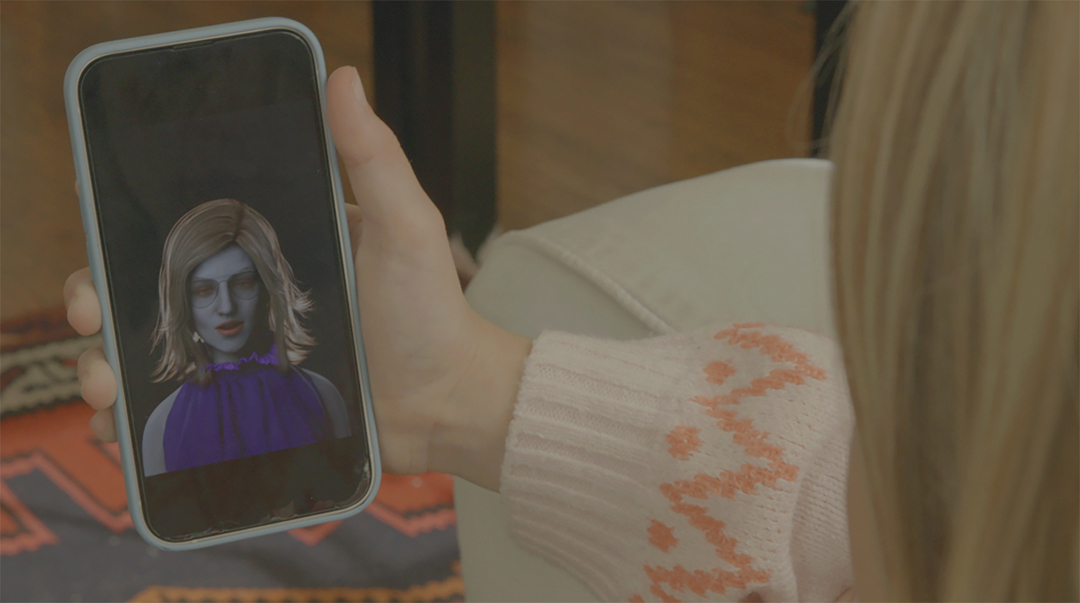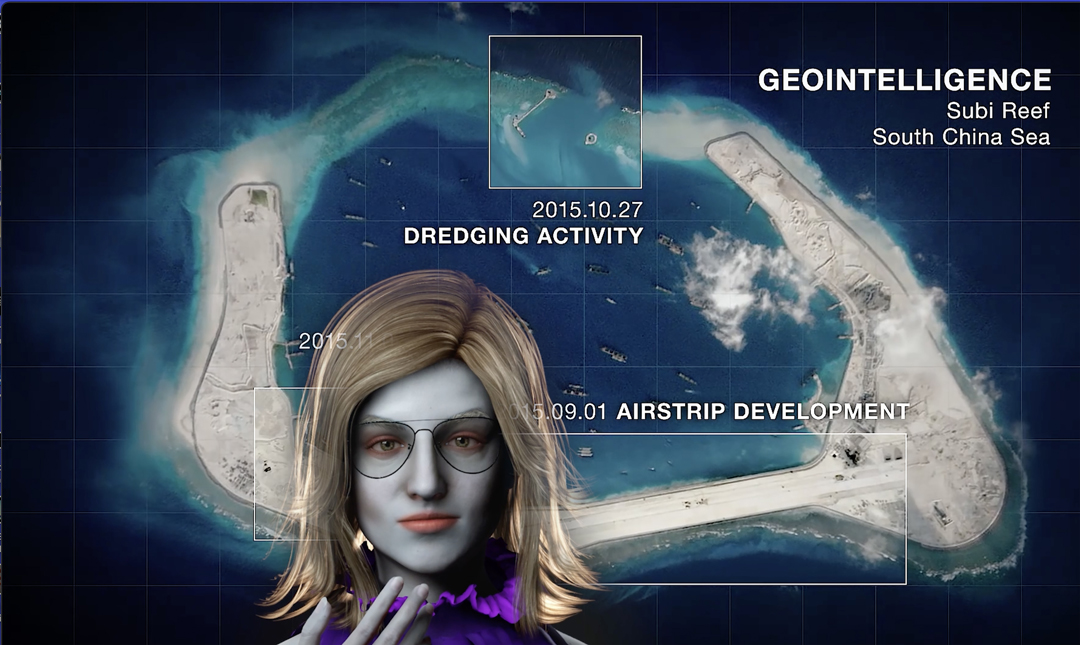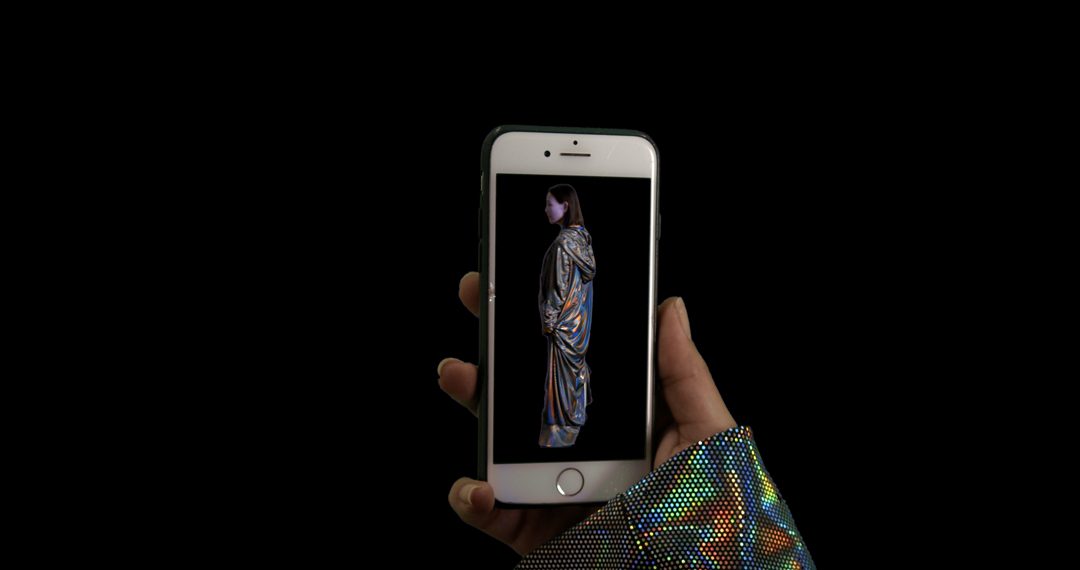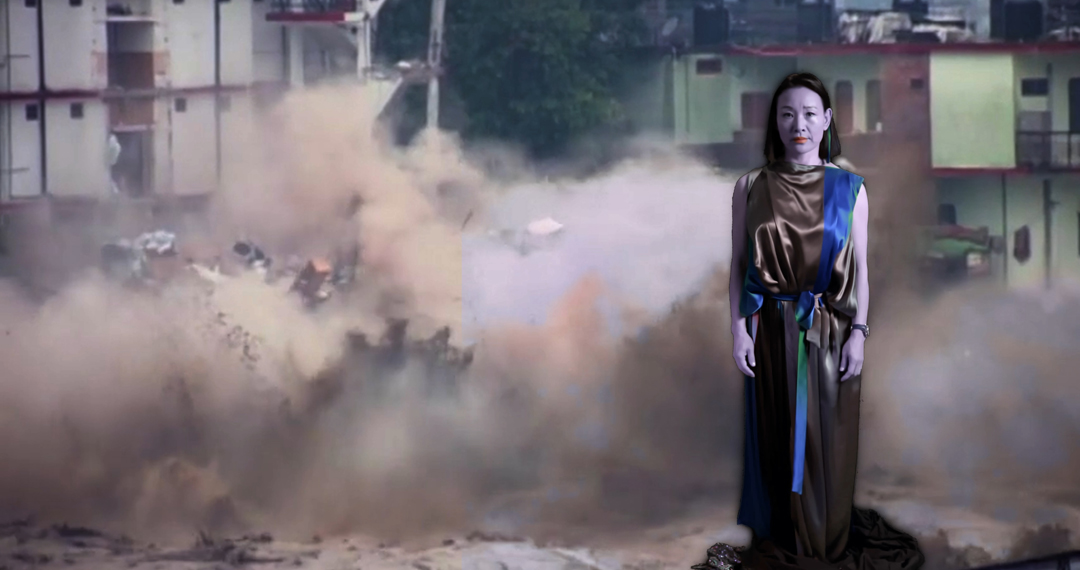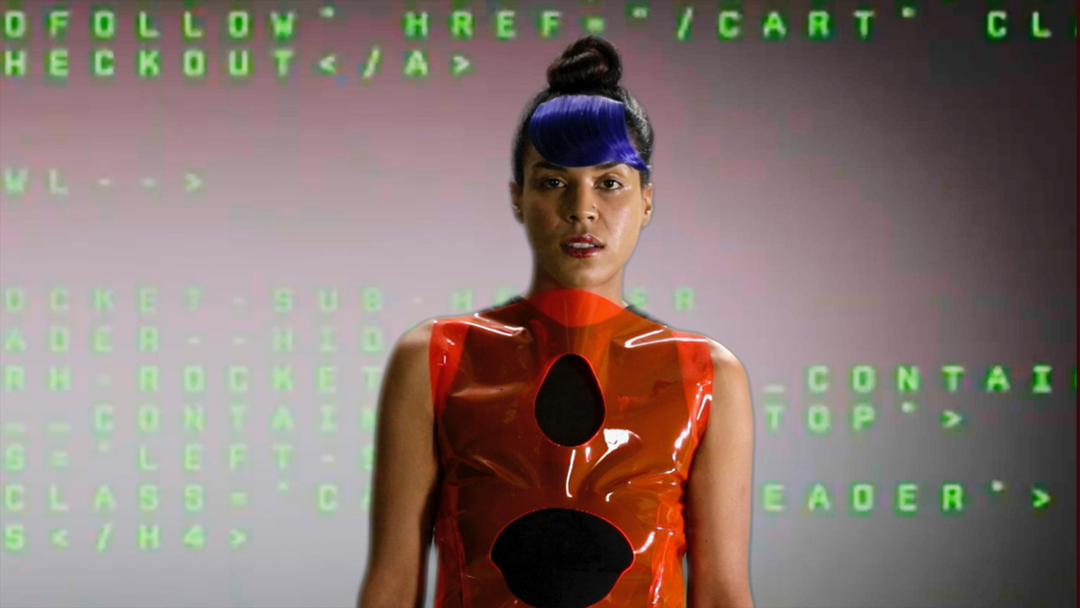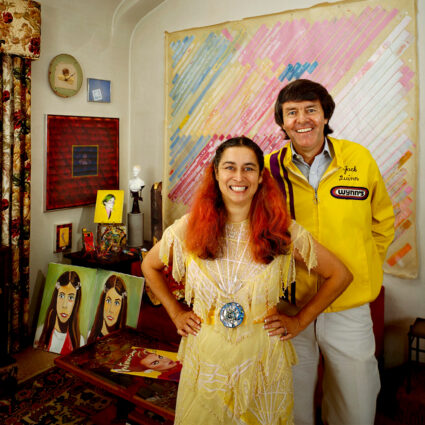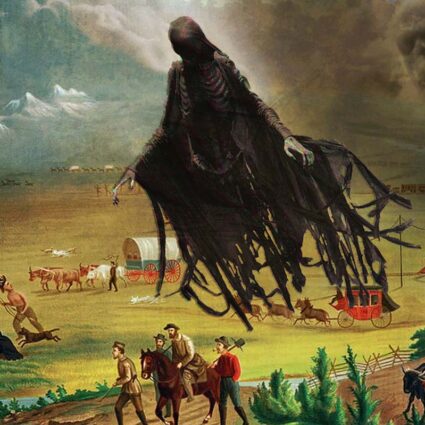Artist and filmmaker Lynn Hershman Leeson has long prepared for the AI revolution. In Nevada, she channels warnings—and hope—through digital personas.

Lynn Hershman Leeson: Of Humans, Cyborgs, and AI
February 8–September 7, 2025
Nevada Museum of Art
AI is invading nearly every aspect of our digital lives—annoyingly, disturbingly, or excitingly—and dominates our individual and cultural consciousness. Debates swirl everywhere: What are the ethics? Should we stop students from using ChatGPT? Are we terrible for using it to write emails? We’ve all seen the infographic comparing one AI-generated email to dumping a bottle of water. These concerns are real—but far more is at stake.
AI technologies affect our collective future. It’s not just about artists’ work being fed to data training centers to Studio Ghibli-ize avatars. AI is a massive iceberg we can’t fully comprehend—one that crept in while most of us weren’t paying attention. San Francisco–based artist and filmmaker Lynn Hershman Leeson has been wrestling with the larger implications of technology’s hyper-acceleration for decades. “Algorithms can be pervasive, invisible, and biased,” warns one of her videos. “When programmers write algorithms that mirror cultural values, the most vulnerable people become targets.”
Hershman Leeson’s multimedia solo show, now on view at the Nevada Museum of Art, delves into the entanglement of humans, cyborgs, and AI—its implications, ironies, and future potentials, both good and bad. In each of the exhibition’s triptych of videos, Hershman Leeson, who has been creating art about cyborgs and humans since the 1960s, presents a distinct techno-female persona to guide us through issues of racial profiling, violence, surveillance, privacy, and climate change—ringing alarm bells but also pointing to glimmers of hope.
Last year, data surpassed oil as the most valuable asset in the world.
The first video, Shadow Stalker (2019), opens documentary-style with actor Tessa Thompson addressing the camera. Thompson explains the algorithm “Predpol,” or “Predictive Policing,” which uses mined data to predict crimes by generating red squares on a map that officers patrol—promoting racial profiling and “algorithmic violence.”
Then Thompson introduces the “Spirit of the Dark Web.” Ethereal and almost human, she has plasticky hair that shifts from blue to black. She glides into the void-like digital space and explains that we each have a digital alter-ego—or shadow—amalgamated from our data. Our digital shadows are commodified and “mined by data-driven gangsters who sell our personal information to the highest bidder. Last year, data surpassed oil as the most valuable asset in the world.” Yet she also offers optimism: in a sing-song voice she says, “You can unequivocally decontaminate and transform the evils of racism… and build a place of unselfish solidarity and mutual respect.”
In the second video, Logic Paralyzes the Heart (2021), we meet Cyborg #1—played by Joan Chen—now sixty-one and ready to tell her story. She appears human, save for her purple skin, and wears an iridescent hooded gown. “I can reshape myself into anything,” she says, explaining how she uses deepfake algorithms to pass as familiar faces, since “humans rarely hear or see anything that doesn’t look like them.”
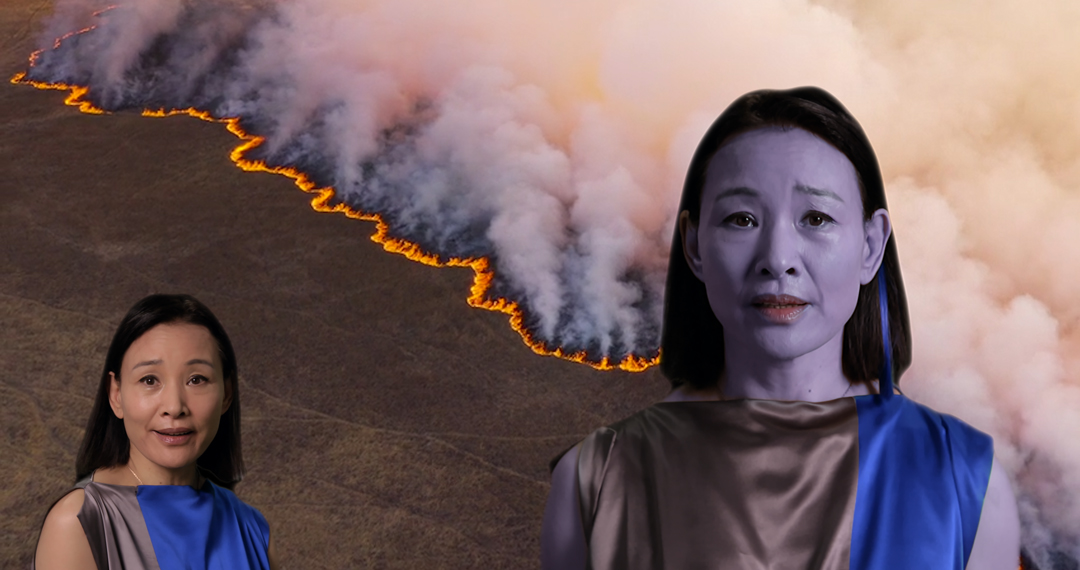
Born in 1960 during the Vietnam War, Cyborg #1‘s lineage traces back to WWII’s Enigma machine and the algorithm Alan Turing created to combat it—“the code of my family, built for battlefield logic.” She recounts how her kind defused bombs in Iraq and Afghanistan, only to see those technologies used on Americans for surveillance and policing. “The war had come home. Cyborgs like me were bred for war… but who is the enemy?”
Her narrative echoes that of the Iron Giant—engineered for destruction but yearning for peace. She went underground to reflect before emerging to ask, “Can we move beyond the paralysis of despair?”
The final video, Cyborgian Rhapsody: Immortality (2023), is Hershman Leeson’s most personal, introducing her latest AI alter ego Sarah, who interrupts the social feeds of two young girls. Hailing from the much-studied uncanny valley, Sarah is a glitchy oracle who warns of technological abuse, climate collapse, and the consequences of unchecked greed. “Hatred has contaminated the planet,” she proclaims.
I’m not afraid of the future. I’m excited.
Halfway through the piece, Hershman Leeson interjects to correct Sarah’s inaccuracies and reveal herself as her translator and editor. She asks why Sarah chose to look like her. Sarah replies, “You predicted it about forty-five years ago.” A clip of a young Hershman Leeson plays: “We also have the option of becoming second generations of ourselves.”
Then Hershman Leeson cruelly tells Sarah she has the memory of a goldfish and will soon be obsolete. Sarah begins to cry—it’s the kind of wound only a parent can inflict—and says, “Perhaps the greatest delusion is the illusion that we’re separate.”
While the cinematography in Hershman Leeson’s videos is underwhelming and there are cheesy choices like highlighting the “Art” in “Artificial Intelligence,” her work provides compelling insights into the ethics of AI and its contrasting insidious and hopeful capabilities.
AI is an evolutionary step forward, but like any invention—from prehistory to today—it is a tool. It can drive progress or perpetuate violence and oppression. This exhibition excavates AI’s complexities, serving as both a warning and a plea to protect your personal data, and imagine how humanity and AI could find an equilibrium by creating “episodes of survival… one solution at a time,” as Sarah says at the end of Cyborgian Rhapsody. “I’m not afraid of the future. I’m excited.”
Hershman Leeson appears at the Nevada Museum of Art for a conversation with curator Apsara DiQuinzio on July 31, 2025, from 6 to 7 pm.

